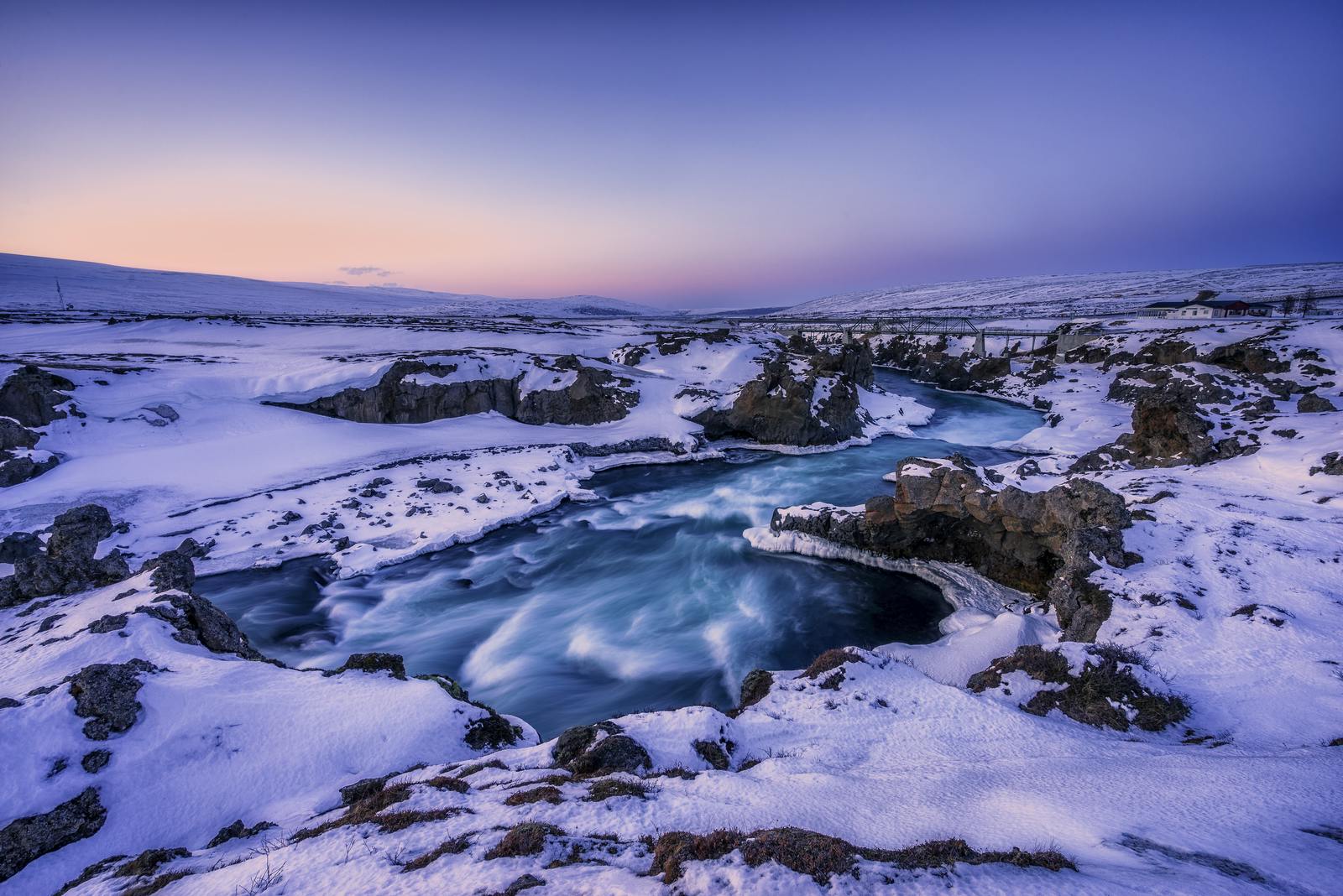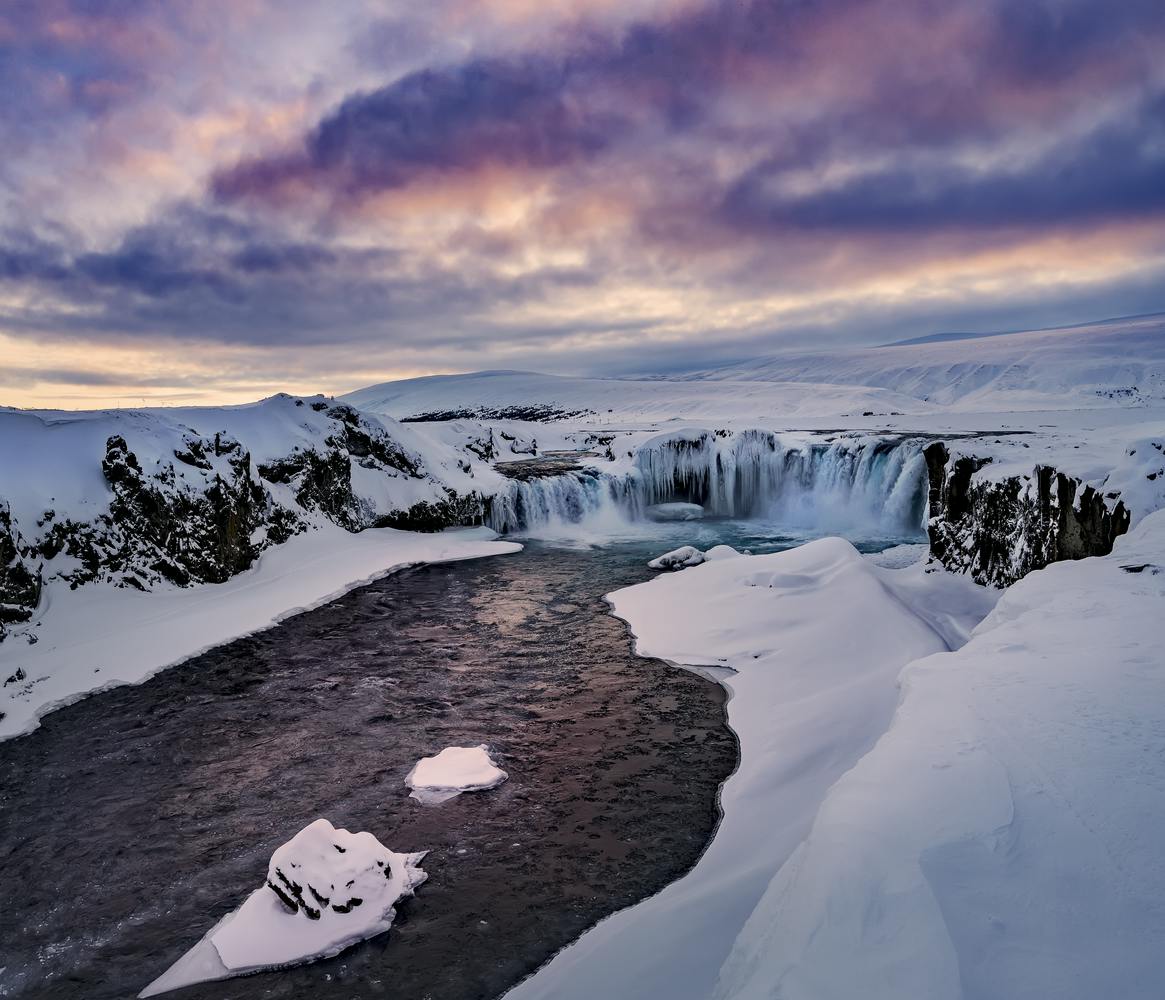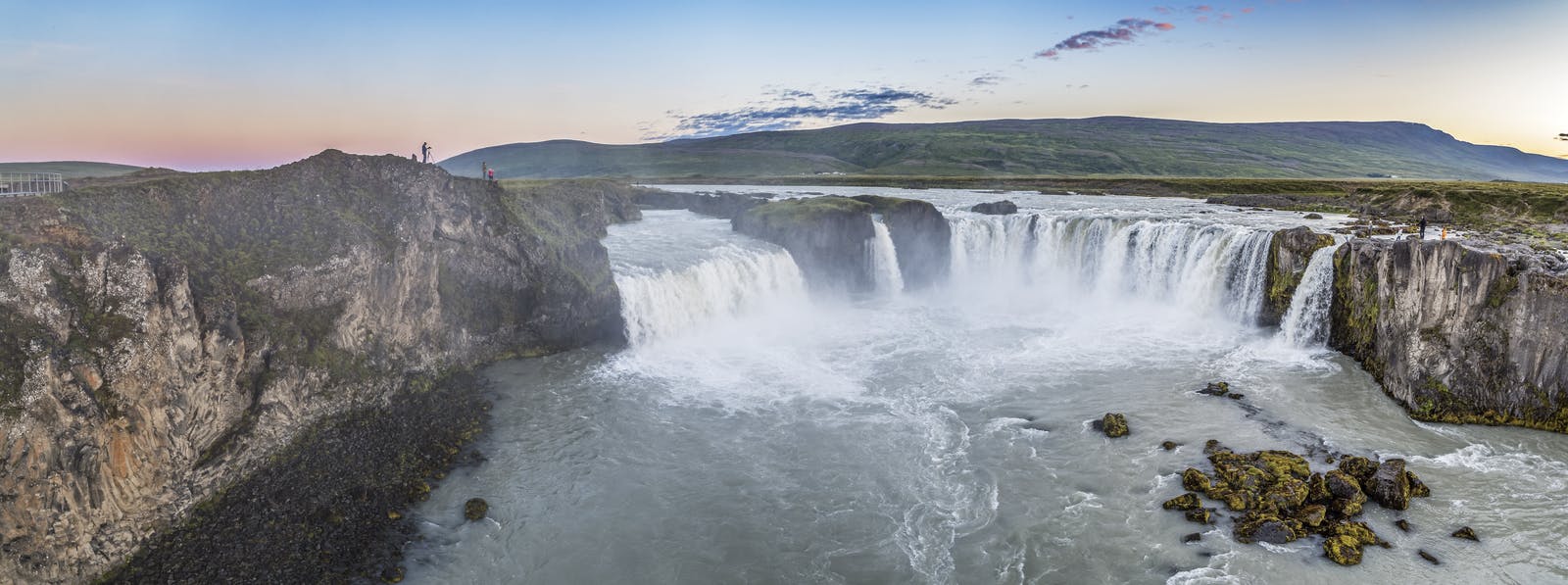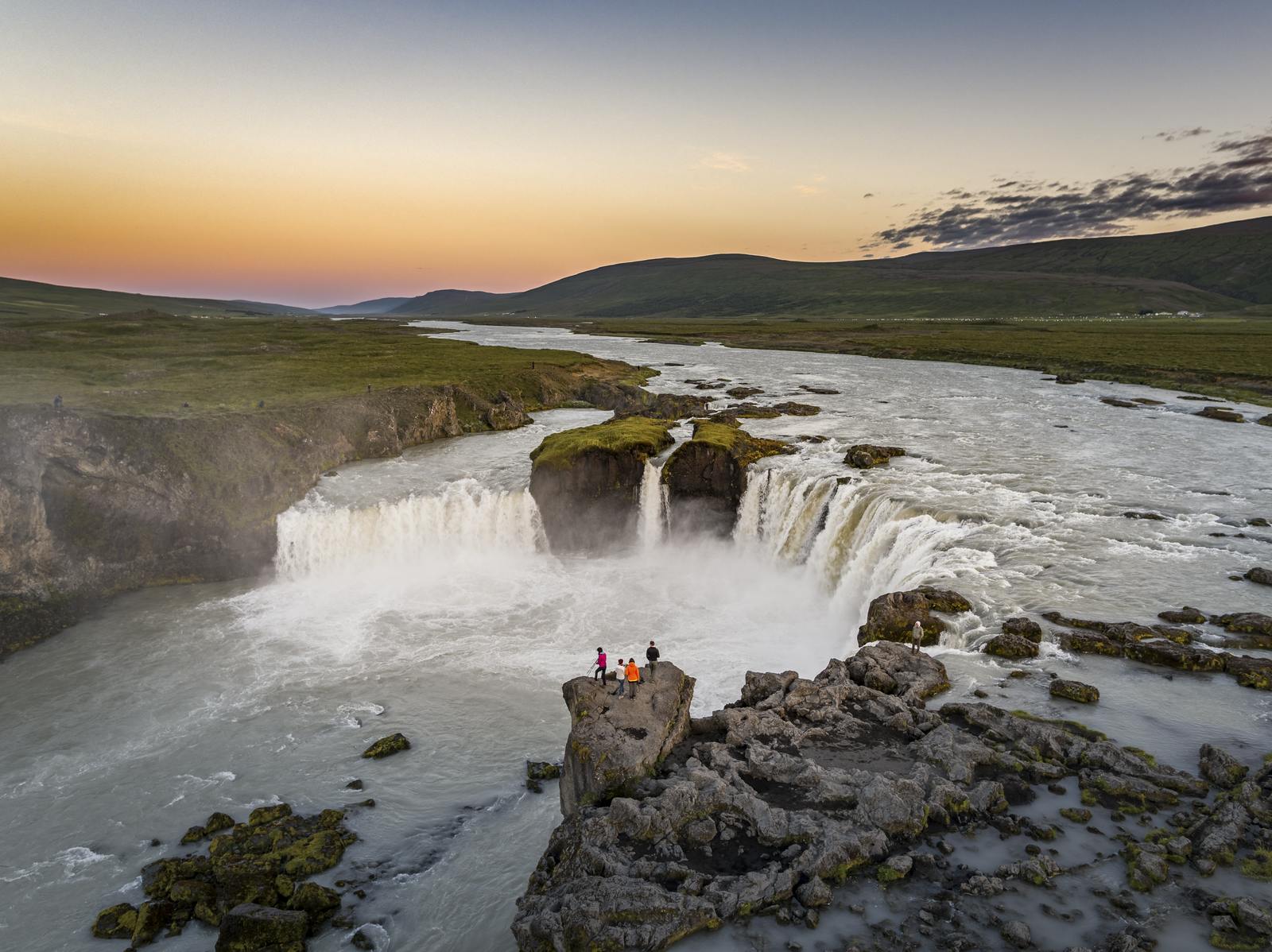
Guide to Hrafnabjargafoss Waterfall in Iceland
Hrafnabjargafoss waterfall remains one of the concealed gems within Þingeyjarsveit County, tucked a few kilometres south of the renowned Goðafoss. It is located in the northeastern part of Iceland, about an hour and a half away from the town of Akureyri. Hrafnabjargafoss is fed by the Skjálfandafljót River, which hosts several remarkable waterfalls, such as Goðafoss and Aldeyjarfoss. Skjálfandafljót River originates from the largest glacier in Europe, the Vatnajökull glacier.
Hrafnabjargafoss in Icelandic translates to "the Raven Rocks' waterfall". It descends from the roughly 9,000-year-old Báðardalshraun lava field; this expanse of volcanic rock extends more than 100 km from the crater area near Vatnajökull to Þingey island, situated much farther downstream in the Skjálfandafljót river.

Glacial Rivers and Their Importance
Beyond their enchanting beauty, Iceland's glaciers serve as crucial environmental assets. These majestic ice formations act as vital sources of fresh water for the island and play a pivotal role in regulating its climate.
Perlan offers a unique opportunity for visitors to delve into Iceland's extraordinary and rare natural wonders. Through a series of exhibits and immersive presentations, cutting-edge technology and interactive experiences are seamlessly blended with captivating information and stories, rendering the displays both entertaining and educational.

How To Get from Reykjavík to Hrafnabjargafoss
The total travel time from Reykjavík to Hrafnabjargafoss can vary depending on road conditions. A typical journey would take about 6 to 7 hours with no stops. However, note that you will be driving through an adventure of scenery and that you might want to make several stops during this trip. The distance from Reykjavík to Aldeyjarfoss is 465 kilometres (289 miles).
- The most common route is to take the Ring Road (Route 1) northward from Reykjavík.
- Follow the Ring Road until you reach Akureyri, the largest town in northern Iceland. Depending on road and weather conditions, this journey takes approximately 4-5 hours.
- From Akureyri, continue east on Route 1 until you reach the town of Húsavík.
- From Húsavík, you can head west on Route 85, which leads to the Sprengisandur highland road.
- The Sprengisandur Highland Road (F26) is a gravel road that provides access to Aldeyjarfoss. The road conditions can be challenging, and it's recommended to use a 4x4 vehicle, especially for the F26 portion.
- After about 42 kilometres (26 miles) on F26, you will see the parking area for Aldeyjarfoss; here, you continue.
- Progress until you encounter a fence leading downhill to Íshólsvatn Lake on your right.
- Proceed in the opposite direction of the lake, alongside the fence, until you reach the river, where the captivating Hrafnabjargafoss waterfall reveals itself.

Hrafnabjargafoss FAQ
What Is The Most Powerful Waterfall in Iceland?
The most powerful waterfall in Iceland is Dettifoss. It is located in the Jökulsárgljúfur Canyon in the Vatnajökull National Park in Northeast Iceland. Dettifoss is known for its impressive volume of water and is considered one of the most powerful waterfalls in Europe.
Is Goðafoss The Biggest Waterfall in Iceland?
Goðafoss is not the biggest waterfall in Iceland, but it is one of the most famous. It is located in the Bárðardalur district of North-Central Iceland.
What Does Foss Mean in Icelandic?
In Icelandic, "foss" simply means "waterfall." Many Icelandic waterfalls have names that end with "foss." For example, Goðafoss translates to "Waterfall of the Gods."
Which Waterfall in Iceland Can You Walk Behind?
One of the waterfalls in Iceland that you can walk behind is Seljalandsfoss. It is located in the South Region of Iceland, along the Ring Road. Seljalandsfoss is unique because it has a path that allows visitors to walk behind the waterfall and experience it from a different perspective.







